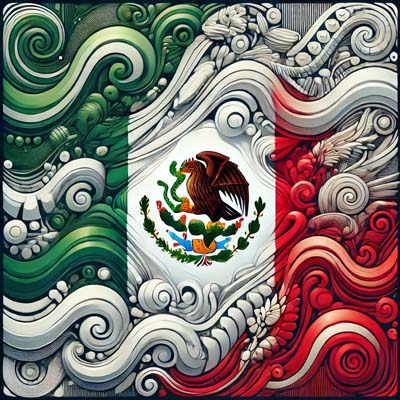Mexico
Suicide Prevention Crisis Lines
- Primary Crisis Hotline:
- Phone Number: 800 822 3737 (SAPTEL – Mexican Suicide Prevention and Emotional Support Helpline)
- Hours of Operation: 24/7
- Additional Details: Free and confidential psychological support in Spanish. (saptel.org.mx)
- Mental Health Helpline:
- Phone Number: 800 911 2000 (Línea de la Vida – Mental Health and Substance Abuse Support)
- Hours of Operation: 24/7
- Additional Details: Provides crisis counseling for mental health and substance abuse issues.
- Emergency Line:
- Phone Number: 911
- Notes: National emergency number for police, fire, and medical assistance.
- LGBTQIA+ Mental Health Support:
- Phone Number: +52 55 5207 3768 (Cuenta Conmigo – LGBTQ+ Support and Mental Health Helpline)
- Hours of Operation: By appointment
- Additional Details: Provides counseling and psychological support for LGBTQIA+ individuals. (cuentaconmigo.org.mx)

Epidemiology of Suicide
Overall Statistics
- Current Suicide Rate (per 100,000 people): 5.3 (2019 data). (worldbank.org)
- Trend Analysis:
- Last 5 Years: Suicide rates in Mexico have been increasing, with young people and Indigenous communities experiencing the highest rates.
Demographic-Specific Insights
- By Gender:
- Male Suicide Rate: Three times higher than females, consistent with global patterns.
- Female Suicide Rate: Lower, though women experience higher rates of suicide attempts.
- By Age Groups:
- Adolescents (15–24): One of the most affected groups, often linked to cyberbullying, academic stress, and family conflict.
- Elderly (60+): Increased risk due to financial insecurity, loneliness, and chronic illnesses.
- Rural vs. Urban:
- Higher suicide rates in Indigenous and rural communities due to lack of mental health resources and economic instability.
- Special Groups:
- Indigenous Communities: Higher suicide rates, often linked to marginalization, loss of cultural identity, and poverty.
- LGBTQIA+ Individuals: Increased risk due to discrimination and social stigma.
Suicide Prevention Innovations
National Strategies and Policies
- Overview: Mexico has implemented National Mental Health and Suicide Prevention Programs to address rising suicide rates.
- Key Elements:
- Expanding access to crisis helplines and community-based mental health services.
- School-based mental health education and resilience training.
- Reducing access to means of suicide, such as firearm regulation and restricting access to pesticides.
Specific Initiatives and Campaigns
- Public Awareness Campaigns:
- Example: “No Estás Solo” (“You Are Not Alone”) campaign raises awareness about suicide prevention and mental health.
- Programs Targeting High-Risk Groups:
- Indigenous Community Support: Culturally adapted suicide prevention programs in Indigenous languages.
- Youth Mental Health Initiatives: School programs addressing depression, bullying, and emotional resilience.
- Collaborative Efforts:
- Mexico collaborates with WHO, PAHO (Pan American Health Organization), and local NGOs to enhance suicide prevention efforts.
Innovative Tools and Approaches
- Digital Tools:
- Mobile apps and chat-based crisis intervention for youth.
- AI-driven suicide risk assessment tools integrated into healthcare systems.
- Community-Based Interventions:
- Suicide prevention training for teachers, law enforcement, and healthcare professionals.
- Peer-support networks for survivors of suicide attempts and families affected by suicide.
Additional Insights
- Cultural Considerations:
- Suicide remains a sensitive topic in Mexico, particularly in Indigenous communities where traditional beliefs influence mental health perceptions.
- Machismo culture can contribute to stigma around help-seeking, particularly among men.
- Research and Data Gaps:
- More research is needed on suicide risks among Indigenous groups and LGBTQIA+ populations.
- Underreporting of suicide deaths continues to be an issue.
- Positive Developments:
- Increased government funding for mental health and suicide prevention.
- Expansion of digital mental health resources to reach underserved communities.
References
- Mexico Ministry of Health (Secretaría de Salud). (n.d.). National Suicide Prevention and Mental Health Strategy. Retrieved from https://www.gob.mx/salud
- World Bank. (2019). Mexico – Suicide Mortality Rate (per 100,000 Population). Retrieved from https://data.worldbank.org/
- World Health Organization. (n.d.). Mental Health and Suicide Prevention in Mexico. Retrieved from https://www.who.int/
- SAPTEL Mexico. (n.d.). Suicide Prevention Helpline and Mental Health Support Services. Retrieved from https://www.saptel.org.mx/
- Cuenta Conmigo. (n.d.). LGBTQIA+ Mental Health and Suicide Prevention Services in Mexico. Retrieved from https://www.cuentaconmigo.org.mx/
- Pan American Health Organization (PAHO). (n.d.). Suicide Prevention and Mental Health Policies in Latin America. Retrieved from https://www.paho.org/
